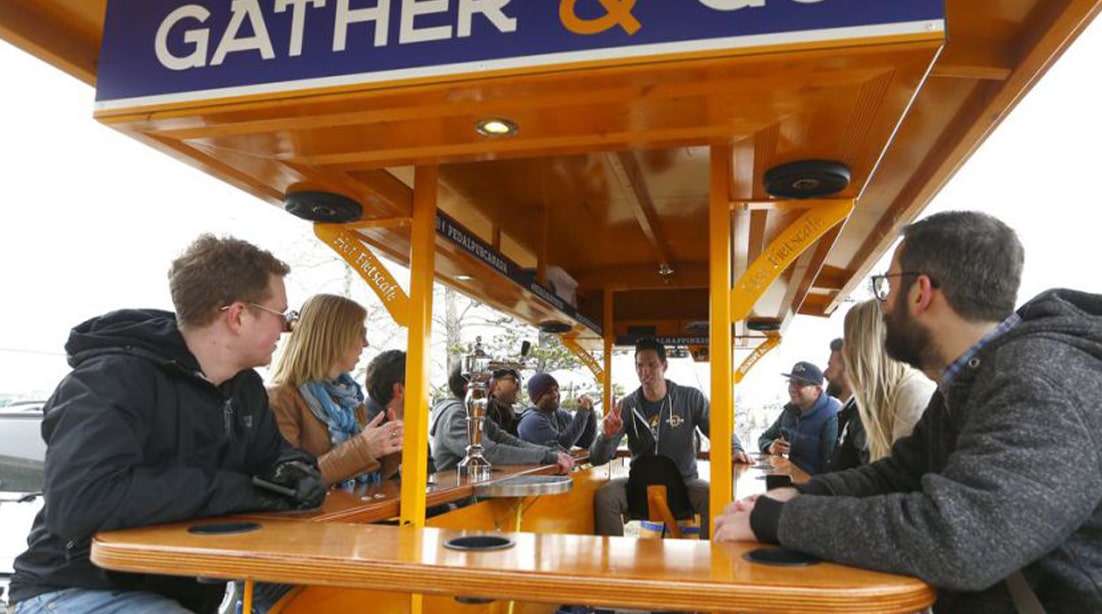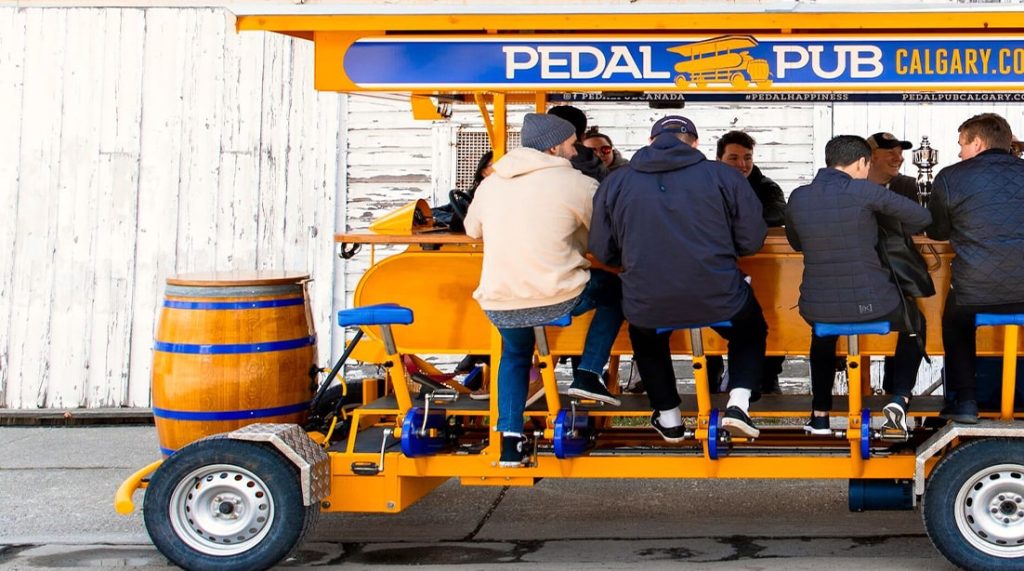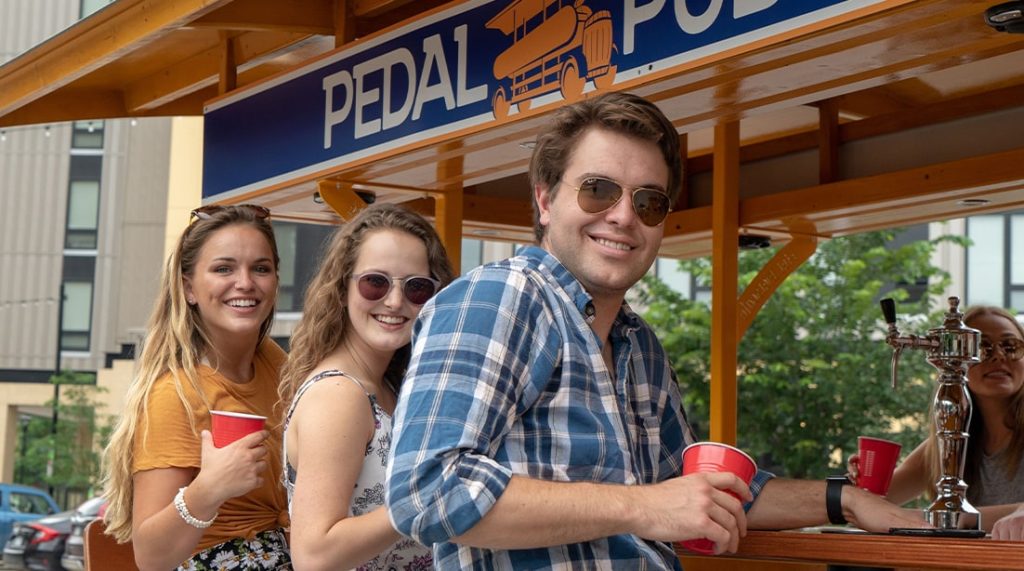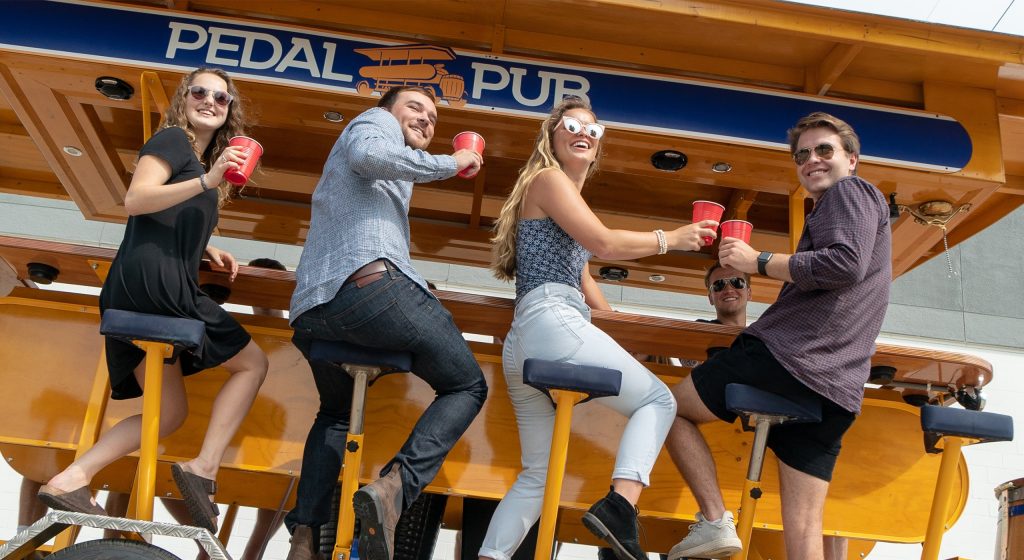Patrons at Freehouse in Calgary’s Kensington neighbourhood looking to order a pint will have plenty to choose from, but a big brand beer will not be one of them.
Each of the pub’s 24 taps are dedicated to craft beer brewed in Alberta.
“Freehouse is an old English term of pubs that could sell whatever the heck they wanted,” Freehouse general manager Matty Stewart said. “So we really wanted to roll with that and find the beer that not only we love but the customers love as well and just showcase that local stuff.”
The pub is another business capitalizing on Alberta’s craft beer boom and helping beer lovers explore the wide range of local brews.
There is a similar motivation behind Calgary’s Pedal Pub: the 15-person pedal-powered patio takes its customers on a tour of the city’s so-called Barley Belt.
The Pedal Pub makes stops at craft breweries in the area, and those pedaling are allowed to drink alcohol while on board.
Edmonton boasts a comparable concept, with less thigh-burning.
The Hops Crossing Passport was started by seven craft breweries in the area and offers a brewery hop for customers as they collect a stamp from each taproom.
According to Don Tse, the beer writer behind the “Don of Beer” blog who has sampled over 22,000 beers in his career, said the beer tourism market is a positive for the industry, but doesn’t guarantee repeat customers to local craft breweries.
“The industry is still relatively young, so things like passports and pedal pubs that all bring a fun element to visiting breweries shines light on breweries [and] lets people explore breweries they otherwise wouldn’t,” Tse said.
“The negative of it is that they create some disloyalty. Like if your objective as a patron is to just get all the stamps in your passport, then you go to each brewery one time, and it’s difficult for breweries to survive on one-time customers.”
According to Alberta Gaming, Liquor and Cannabis, the number of breweries in the province has shot up to 123 from 27 between October 2015 and January 2020.
Mike McNeil, the executive director of the Alberta Small Brewers Association, said one of the biggest challenges facing craft brewers is attracting repeat customers and getting a foothold in the expanding marketplace.
“It’s all about the brand experience. I think a lot of brewers succeed if they have a really unique brand experience,” McNeil said. “If you come into the brewery and [find] something that’s quite unique… that experience helps them stand out.”
It’s a concept that Calgary’s 88 Brewing has taken to heart.
The craft brewery opened less than two years ago, run by four friends who bonded over home-brewing beer, and pays a neon homage to the 1988 Olympics hosted in Calgary.
“By using ’88, we were able to tug on the heartstrings of nostalgia and play with a retro, neon vibe,” co-founder Jordan Saracini said. “You always kind of want to differentiate yourself in some way while still being memorable and approachable, and I think we tied all of those things together really well.”
The brewery is also looking to expand its customer base with collaborations.
According to Saracini, ’88 Brewing has teamed up with Noble Pizza for food service in their 60-seat tap room.
The brewery has also teamed up with Camp Brand clothing, and other craft breweries like Last Best Brewing to work on collaborative beer recipes.
“Gone are the days where craft beer was so novel that you could just open a craft brewery and the money would start rolling in,” Tse said.
“If you’ve got a good product, you’ve got good service, and if you’ve got good marketing, you’re going to succeed.”
But beer experts are anticipating a slowdown in growth in the industry this year. Five breweries closed up shop in 2019, and Tse expects an oversupply of product to spill over into 2020.
Tse is expecting what he calls a shake out over the next two years, as demand for craft beer catches up to the supply of suds.
“Either breweries will have to close, refinance, take on new partners or rejig their business plan, change their beers,” Tse said. “I think we’re going to see a pause in growth. I am aware of a handful of new breweries that are planning to open, but not the 10 that opened a couple of years ago.”
If supply catches up with demand, Tse said he expects growth to resume at a rapid pace.
The Alberta Small Brewers Association said the industry is at a tipping point, and could be a viable long-term success story in Alberta.
“I would say now is the time to keep the foot on the gas and make sure our industry continues to grow,” McNeil said. “But overall, there’s some strong momentum there.”
Visit Global News to view this story directly.







